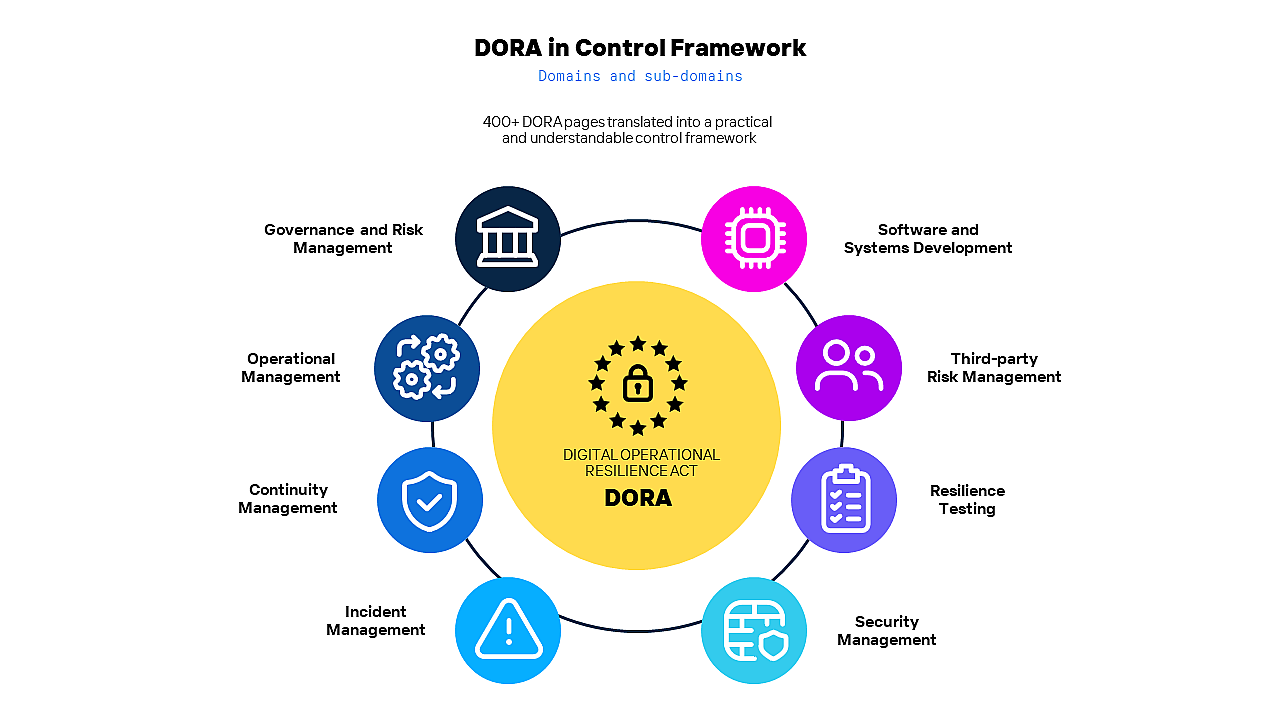The challenge
DORA is about equipping leaders to build institutions resilient enough to handle complex threats such as sophisticated ransomware attacks, espionage, and rapid geopolitical changes that could force a switch in IT service providers. This means making strategic choices, like selecting the right technology, revisiting how we access IT assets, redesigning our networks, re-evaluating longstanding IT partnerships, and embracing regular testing in real-world scenarios.
Central to these shifts is our DORA Control Framework, crafted from the extensive 400-page DORA legislation. This framework isn't just a checklist; it's a detailed strategy to help organizations effectively implement and manage DORA's wide-ranging security requirements.
What makes DORA a challenge? It's a complex mix of factors:
- New accountability. DORA places significant responsibility for organizational resilience, risk management, and regulatory adherence on management teams.
- Mandated exit strategy. There's now a requirement for organizations to have a planned cloud exit strategy, inclusive of contractual terms and exit testing.
- Advanced testing. DORA requires various tests for resilience, continuity, and security, even extending to third-party environments.
- Asset and supply chain management. Maintaining an overview of all critical assets, an ICT service provider registry, and protective measures for assets and risk reduction is essential, to the last link in the chain, including the supervision.
- Detailed requirements. DORA specifies extensive requirements across backups, network design, operational control, incident management, and more.
Our DORA Control Framework
Our approach with the DORA Control Framework is both strategic and practical. We've transformed DORA's detailed and legalistic content into 8 (recognizable) domains and 87 underlying controls, each tied to specific legislation.
We've created a dashboard based on a five-level maturity model to identify key risk areas and compliance gaps. We're also providing guidance for quarterly reports to keep management updated and ready for new emerging requirements.
In summary, DORA is more than a regulatory hurdle; it's an opportunity to strengthen our digital resilience and security. Let's tackle this with the dedication and resolve it requires, using the DORA Control Framework as our guide to a safer and more resilient future.


